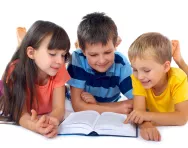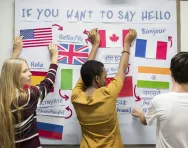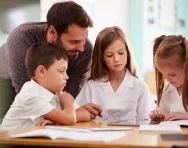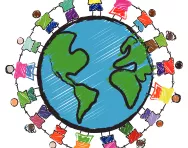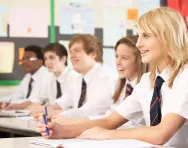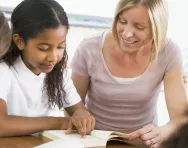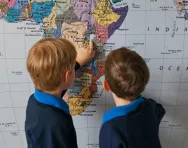Important update from TheSchoolRun
For the past 13 years, TheSchoolRun has been run by a small team of mums working from home, dedicated to providing quality educational resources to primary school parents. Unfortunately, rising supplier costs and falling revenue have made it impossible for us to continue operating, and we’ve had to make the difficult decision to close. The good news: We’ve arranged for another educational provider to take over many of our resources. These will be hosted on a new portal, where the content will be updated and expanded to support your child’s learning.
What this means for subscribers:
- Your subscription is still active, and for now, you can keep using the website as normal — just log in with your usual details to access all our articles and resources*.
- In a few months, all resources will move to the new portal. You’ll continue to have access there until your subscription ends. We’ll send you full details nearer the time.
- As a thank you for your support, we’ll also be sending you 16 primary school eBooks (worth £108.84) to download and keep.
A few changes to be aware of:
- The Learning Journey weekly email has ended, but your child’s plan will still be updated on your dashboard each Monday. Just log in to see the recommended worksheets.
- The 11+ weekly emails have now ended. We sent you all the remaining emails in the series at the end of March — please check your inbox (and spam folder) if you haven’t seen them. You can also follow the full programme here: 11+ Learning Journey.
If you have any questions, please contact us at [email protected]. Thank you for being part of our journey it’s been a privilege to support your family’s learning.
*If you need to reset your password, it will still work as usual. Please check your spam folder if the reset email doesn’t appear in your inbox.
The primary school International Baccalaureate (IB) explained
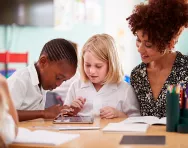
In many international schools worldwide, as well as some state schools and independent schools in the UK, pupils follow a curriculum called the International Baccalaureate (IB).
Taught in over 100 countries around the world, in over 5,000 schools, the IB encourages pupils, teachers and parents to be ‘partners in learning,’ with an emphasis on students taking control of their own learning.
The IB is a continuous curriculum for children and young people aged three to 19. The primary school element is known as the Primary Years Programme (PYP) and is for children aged three to 12.
In England, maintained (state) schools must follow the National Curriculum, but academies and independent schools can choose to follow a different curriculum, such as the IB, either on its own or alongside the National Curriculum.
Ten schools in the UK currently use the IB PYP.
IB: the guiding principles
The IB has an emphasis on an international education. It aims to:
- Support children’s academic, social and emotional wellbeing.
- Encourage students to develop independence and take responsibility for their own learning.
- Help pupils gain an understanding of the world and how to function comfortably within it.
- Establish personal values as a foundation for international-mindedness.
What do children learn under the IB for primary school?
The PYP covers six distinct subject areas:
- Language
- Maths
- Science
- Social studies
- Arts
- Personal, social and physical education
All PYP pupils have the opportunity to learn more than one language from the age of seven.
The PYP also has six ‘transdisciplinary themes’ that are applied across the curriculum and tie the subject areas together, with a strong local and global focus.
Who we are: beliefs and values; personal, physical, mental, social and spiritual health; human relationships including families, friends, communities and cultures; rights and responsibilities; what it means to be human.
Where we are in place and time: personal histories; homes and journeys; the discoveries, explorations and migrations of humankind; the interconnectedness of individuals and civilisations, from local and global perspectives.
How we express ourselves: how we discover and express ideas, feelings, nature, culture, beliefs and values; how we reflect on, extend and enjoy our creativity; our appreciation of the aesthetic.
How the world works: the natural world and its laws; the interaction between the natural world and human societies; how humans use their understanding of scientific principles; the impact of science and technology on society and the environment.
How we organise ourselves: the interconnectedness of human-made systems and communities; the structure and function of organisations; societal decision-making; economic activities and their impact on people and the environment.
Sharing the planet: rights and responsibilities in how we share finite resources with other people and living things; communities and the relationships within and between them; equal opportunities; peace and conflict resolution.
Pupils address all six themes in depth every year (except for three- to five-year-olds, who cover four themes), with each theme taking several weeks. The aim is to help children understand how they connect with school and the world beyond in an engaging and challenging way.
The culmination of the PYP is the Exhibition in the final year: a celebration of children’s knowledge and skills as they finish their primary school journey.
The Exhibition focuses on one of the six themes. Children work in small groups to explore a particular element of the theme that they choose themselves, such as caring for the environment. They’re supported by mentors, who might include teachers, parents, volunteers from the community, and experts.
At the end, children share what they’ve learned through a variety of techniques, including presentations, performances, displays of work, art, games and quizzes.
How are children assessed under the IB?
There are no formal tests that children studying the PYP have to take. Instead, children are assessed on an ongoing basis through:
- Classroom observations
- Open-ended or goal-directed tasks
- Tests and quizzes
IB schools will devise their own assessment policy, which should be communicated to all pupils and parents.
The PYP doesn’t enforce any standardised testing like SATs, but in some countries – including England – end-of-stage tests, such as KS1 and KS2 SATs, are compulsory, and children therefore have to complete them. In England, the exception is independent schools, where pupils don’t have to take SATs.
Some schools opt to use commercially available tests, similar to SATs to assess pupils.
Moving on, pupils of secondary age are assessed through portfolios of coursework and on-screen tests in distinct subjects including language and literature, geography, history, maths, biology, chemistry, and physics.
Between the ages of 16 and 19, students can study for the IB Diploma, which is an internationally-recognised qualification equivalent to A levels.
What do schools think of the IB?
‘We strongly believe that our Primary Years Programme develops the academic, social and emotional wellbeing of students, encourages students to become independent and take responsibility for their own learning, supports students’ efforts to gain understanding of the world and function comfortably within it, and helps to establish personal values that support international-mindedness.’
Southbank International School, London
'By creating an environment where students make connections between what they are learning in the classroom and the world around them, we are creating global citizens who will be well prepared to take leading roles in the world.’
Seneca Academy, USA
